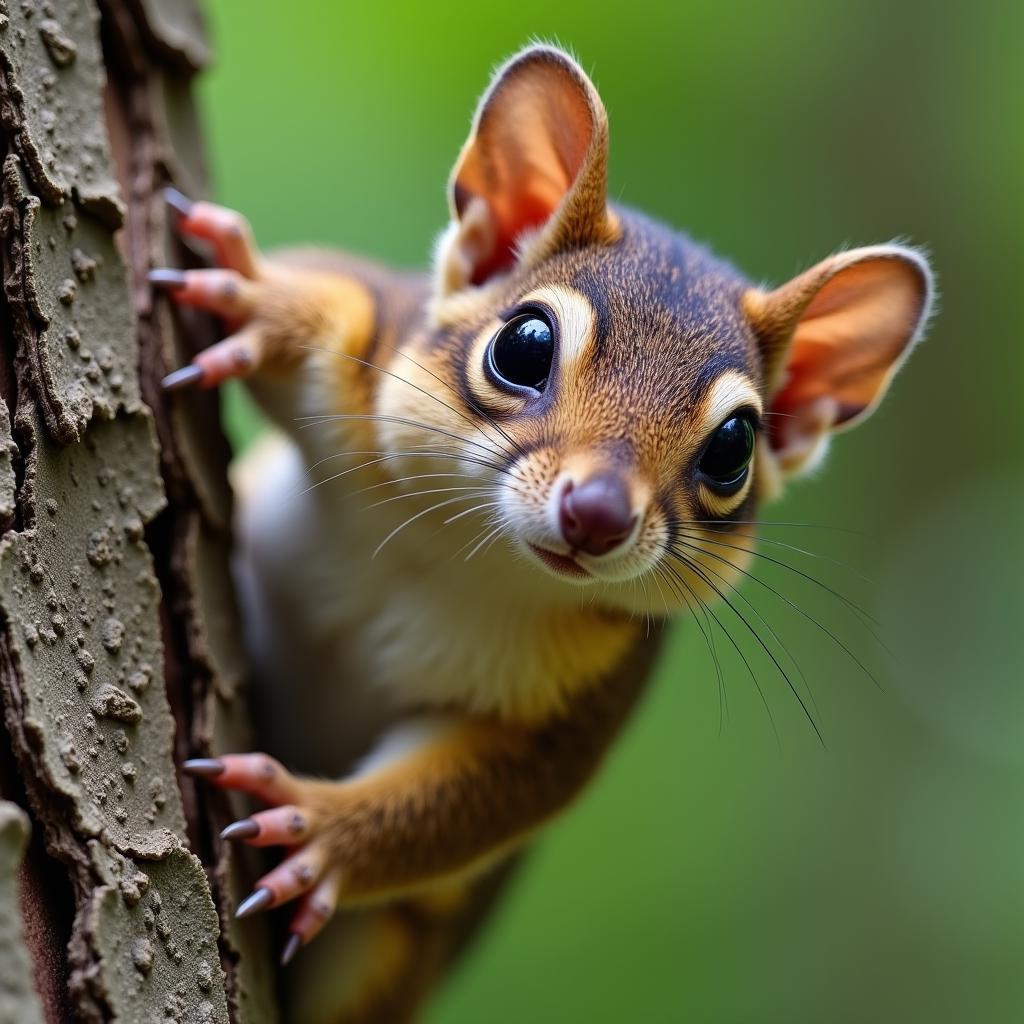Exploring the Fascinating World of the Connecticut Flying Squirrel
October 24, 2024The Connecticut Flying Squirrel, a small but mighty creature of the night, graces the forests of North America. Don’t be fooled by its name – this arboreal acrobat doesn’t actually fly, but rather glides effortlessly through the air. Their fascinating adaptations and nocturnal habits make them a unique and intriguing species to learn about.
A Closer Look at the Elusive Connecticut Flying Squirrel
Unlike their diurnal counterparts, Connecticut flying squirrels are most active during the night, venturing out under the cover of darkness to forage for food and socialize. Their large, expressive eyes are a testament to their nocturnal lifestyle, allowing them to navigate with ease through the darkest of forests.
Physical Characteristics: Small Size, Big Features
Measuring a mere 8-10 inches in length, the Connecticut flying squirrel is a compact package of agility and grace. Their most distinctive feature is their patagium, a furry membrane that extends from their wrists to their ankles. This remarkable adaptation allows them to glide for impressive distances, making them masters of their arboreal domain.
Their soft, dense fur is typically brown or gray on their backs, providing excellent camouflage against the bark of trees. Underneath, their fur is a lighter shade, further aiding in their ability to blend seamlessly with their surroundings.
 Connecticut flying squirrel perched on a branch
Connecticut flying squirrel perched on a branch
Diet and Habitat: An Appetite for Fungi and Treetop Living
Connecticut flying squirrels are mycophagists, which means their diet primarily consists of fungi, particularly truffles. They also supplement their diet with nuts, seeds, fruits, and occasionally insects. Their foraging habits play a crucial role in the forest ecosystem, as they help to disperse fungal spores.
These arboreal specialists prefer mature forests with ample tree cavities for nesting and raising their young. They are highly adaptable and can thrive in both deciduous and coniferous forests, as long as suitable nesting sites and food sources are available.
The Art of Gliding: Aerial Acrobats of the Night
The Connecticut flying squirrel’s gliding ability is a sight to behold. By launching themselves from a high vantage point and extending their patagium, they can cover remarkable distances with impressive control. Their flattened tail acts as a rudder, allowing them to steer and maneuver with precision.
Conservation Status and Threats: Protecting a Vital Part of the Ecosystem
While Connecticut flying squirrels are not currently considered endangered, their populations are facing increasing pressure from habitat loss and fragmentation. As forests are cleared for development and agriculture, these elusive creatures are losing their homes and sources of food.
Conservation efforts are crucial to ensure the long-term survival of the Connecticut flying squirrel. By protecting and restoring forest habitats, we can help to safeguard these fascinating creatures and the vital role they play in the ecosystem.